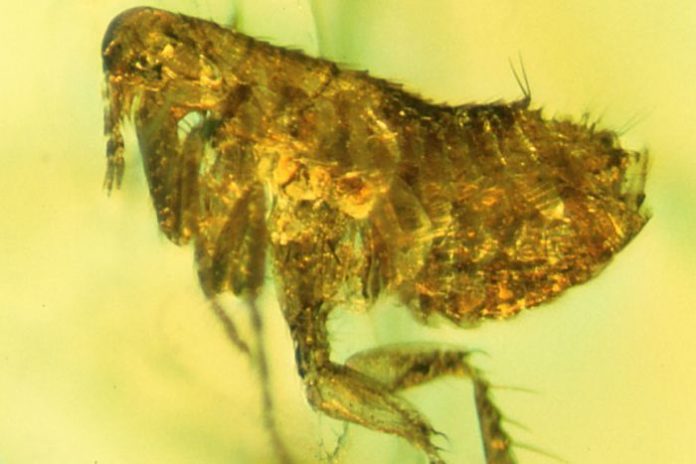 A 20-million-year-old flea preserved in amber carries what may be an ancestor of the pathogen that caused one of the world’s deadliest plagues, the Black Death, according to a study.
A 20-million-year-old flea preserved in amber carries what may be an ancestor of the pathogen that caused one of the world’s deadliest plagues, the Black Death, according to a study.
Researchers believe the bacteria, described in the Journal of Medical Entomology, was an ancient strain of Yersinia pestis, which caused the bubonic plague, aka the Black Death. More than a third of Europe’s population — at least 30 million people — succumbed to the scourge in the 14th century.
Droplets of the bacteria were found on the flea’s proboscis (sucking mouthpart) and in the rectum of the flea.
“Aside from physical characteristics of the fossil bacteria that are similar to plague bacteria, their location in the rectum of the flea is known to occur in modern plague bacteria,” said Dr George Poinar Jr, an entomology researcher in the College of Science at Oregon State University.
“In this fossil, the presence of similar bacteria in a dried droplet on the proboscis of the flea is consistent with the method of transmission of plague bacteria by modern fleas.”
The amber containing the flea was found in amber mines at what is now the Dominican Republic, between Puerto Plata and Santiago. Millions of years ago the area was a tropical forest.
Dr Poinar studied the size, shape and characteristics of the flea’s bacteria under extremely high magnification.
All of its features are consistent with modern forms of the bubonic plague bacteria. Only Y. pestis exhibits unique rod and spherical shapes, which the flea’s bacteria displays as well.
Previously it was thought fleas became disease vectors, causing illness in animals, around 20,000 years ago. Now scientists like Dr Poinar, Jr., are rethinking that supposition.
Aside from the preserved-in-amber flea, there is evidence past outbreaks of bubonic plague were caused from different strains, some of which are now extinct. In theory, the bacteria could have been evolving for millions of years.
While dinosaurs went extinct around 66 million years ago, long before this flea was alive, fossilised, flea-like creatures have been found dating to the dinosaur era.
It’s long been theorised a meteor strike, coupled with volcanic activity, did in the dinosaurs, but perhaps disease played a factor too. Time will tell if evidence is found to support that possibility.
“If this is an ancient strain of Yersinia, it would be extraordinary,” Dr Poinar said.
“It would show that plague is actually an ancient disease that no doubt was infecting and possibly causing some extinction of animals long before any humans existed. Plague may have played a larger role in the past than we imagined.”

